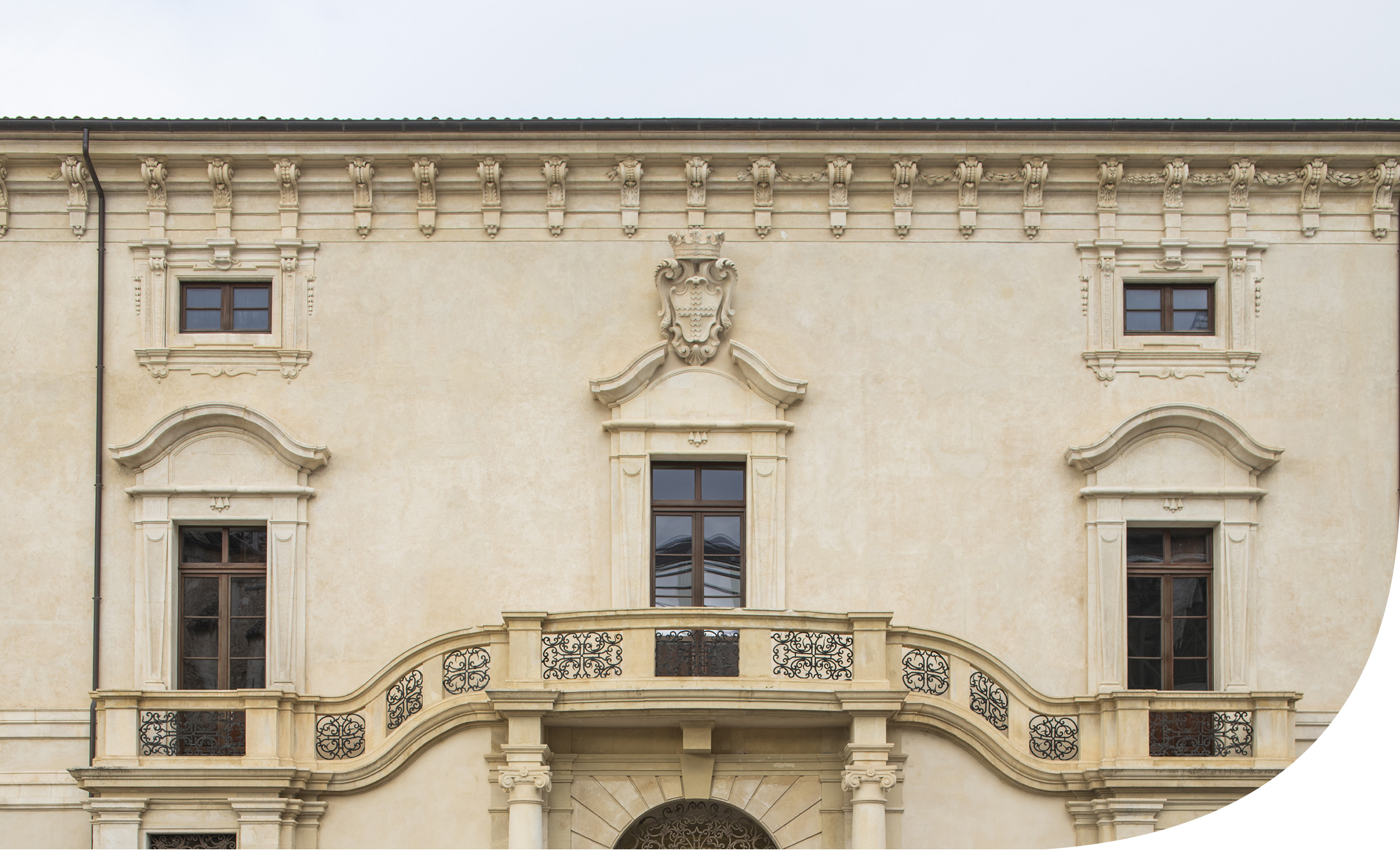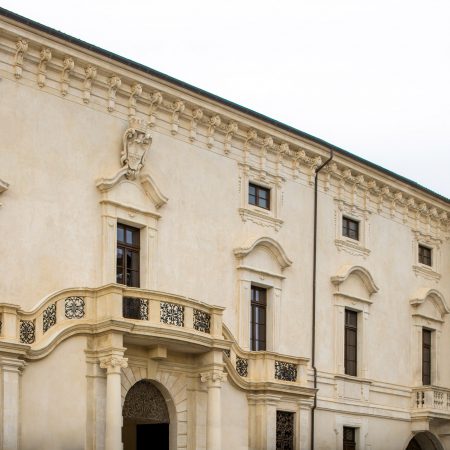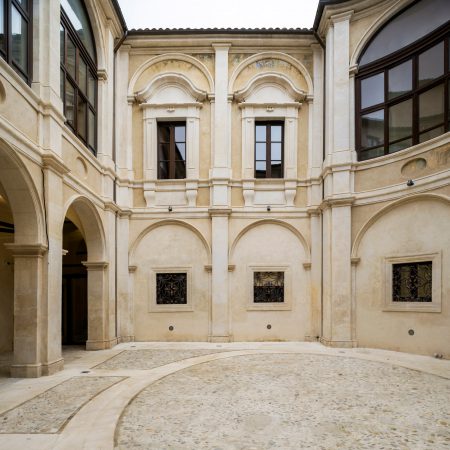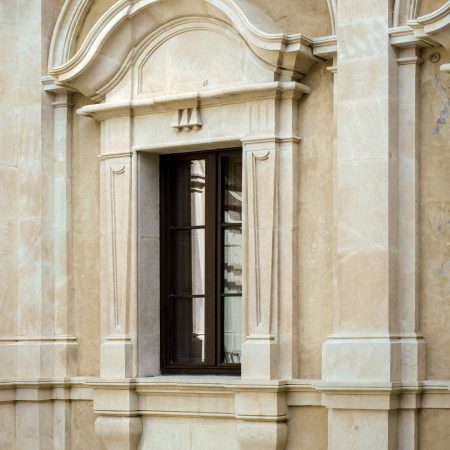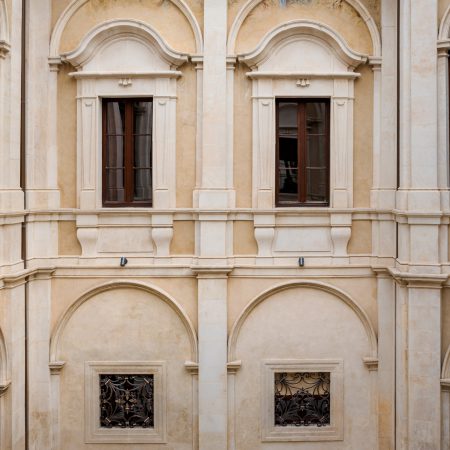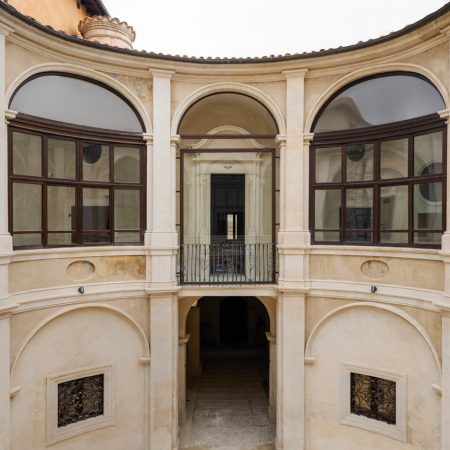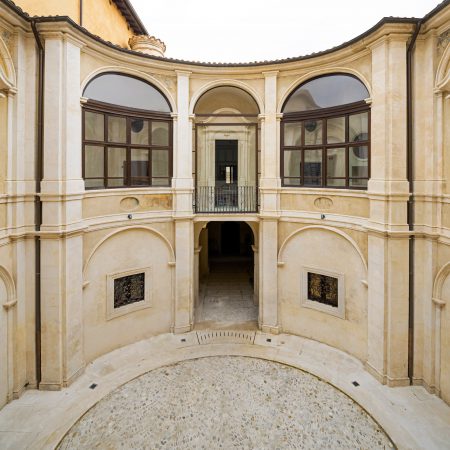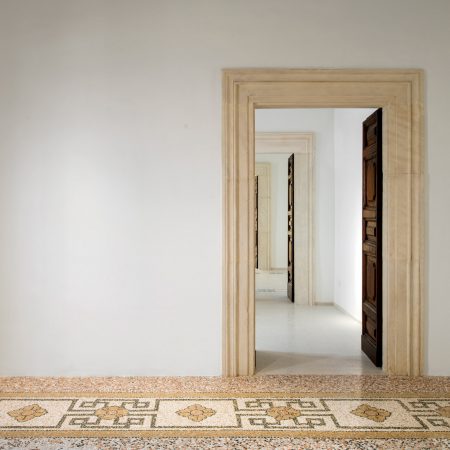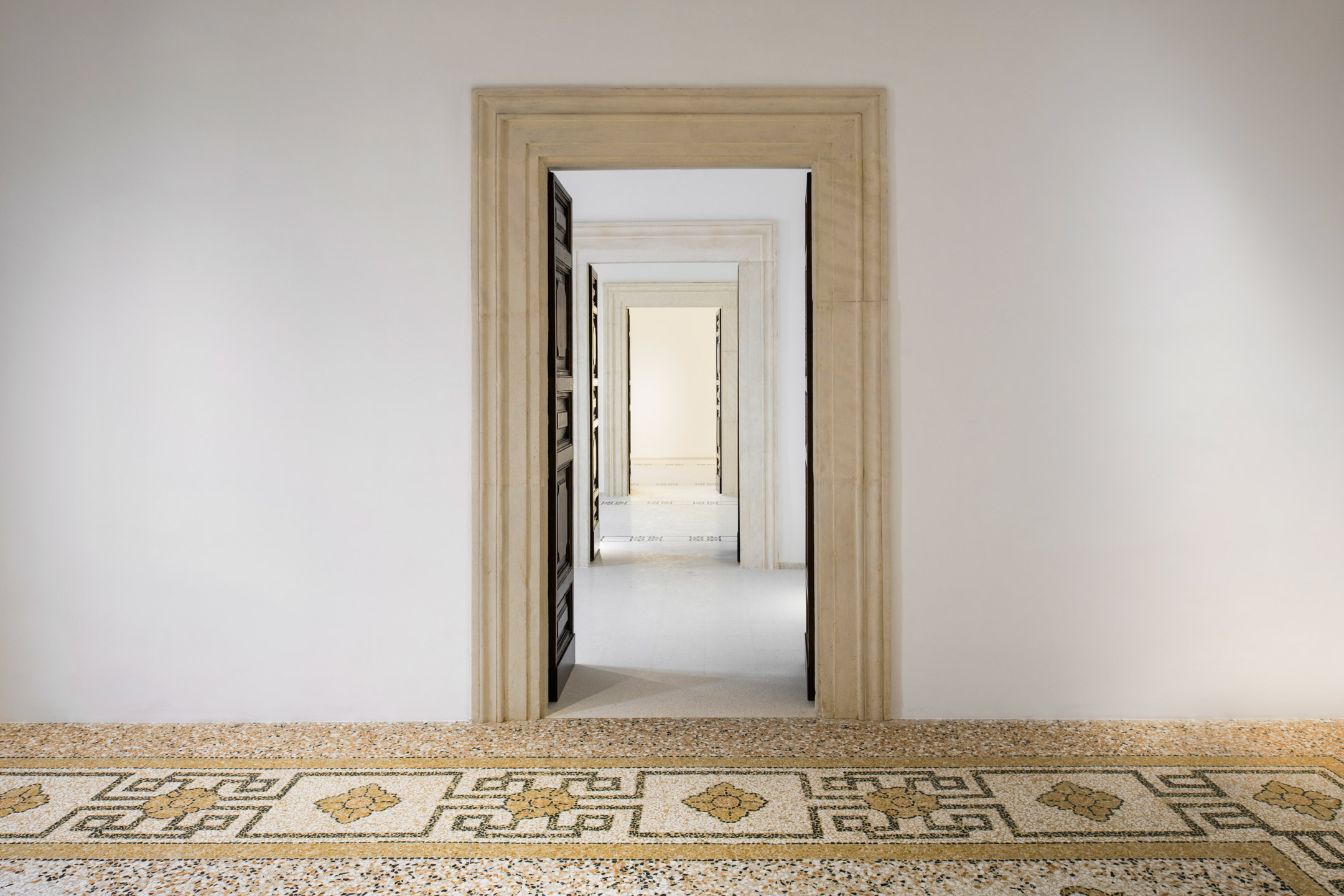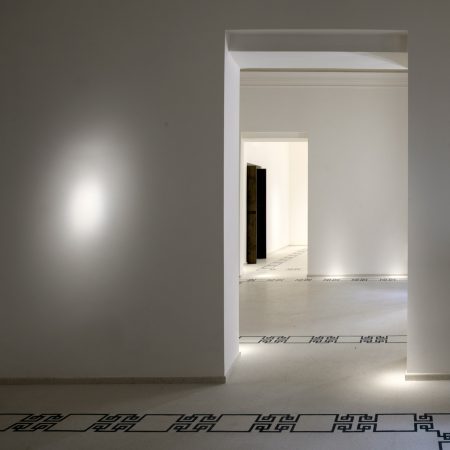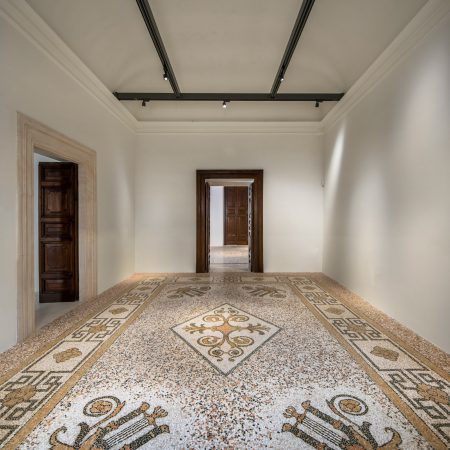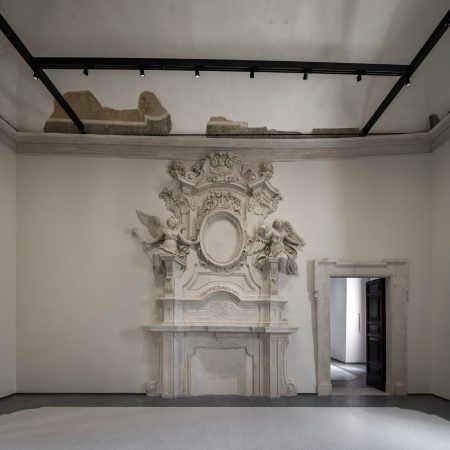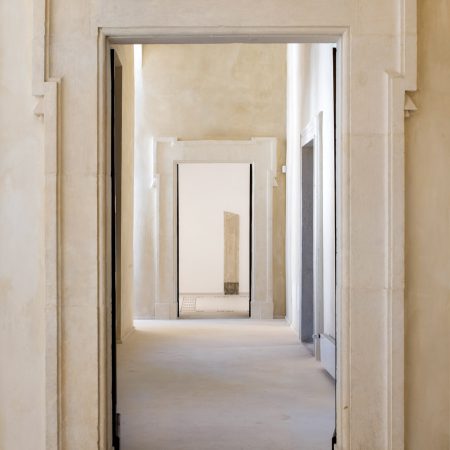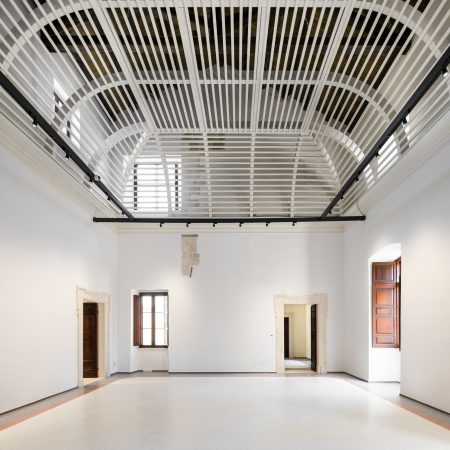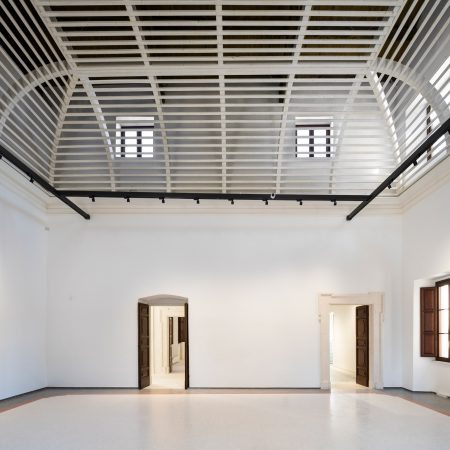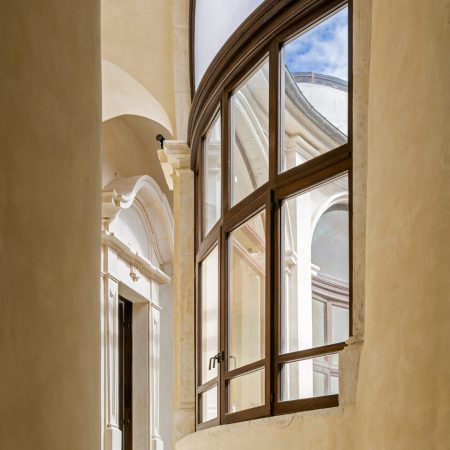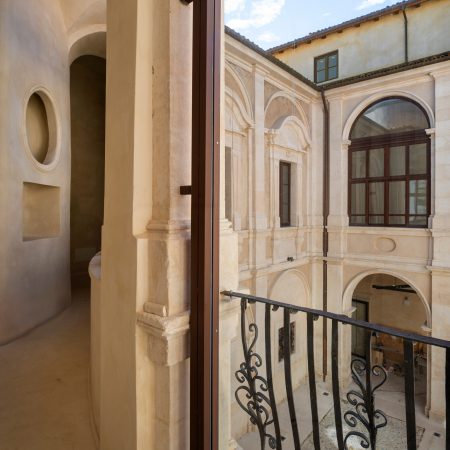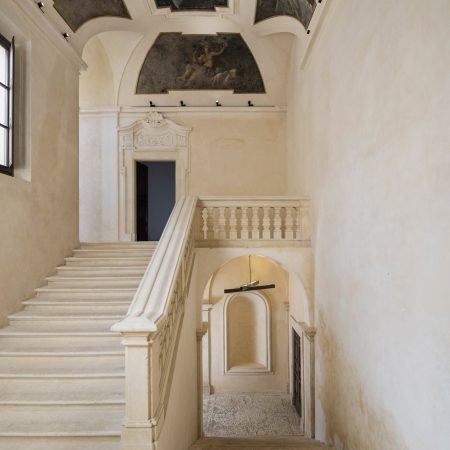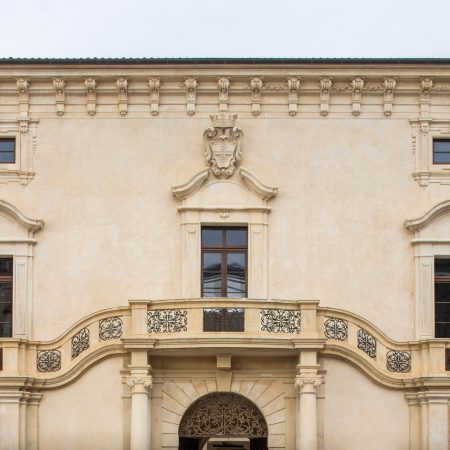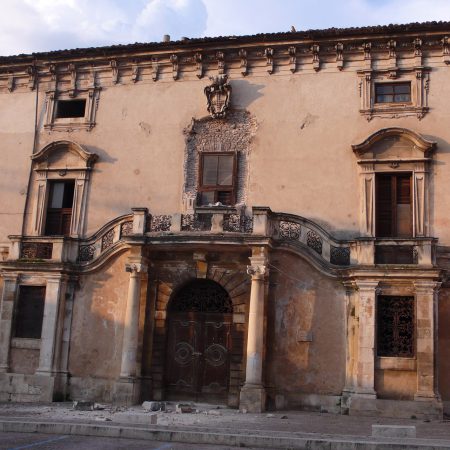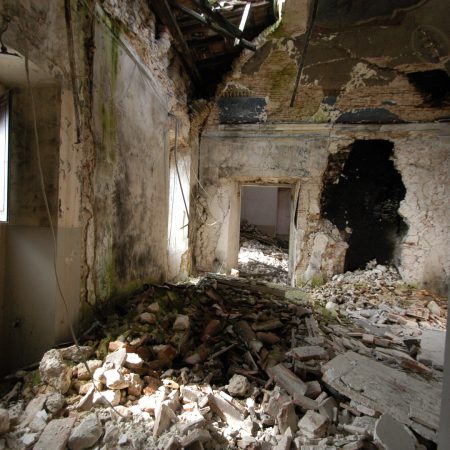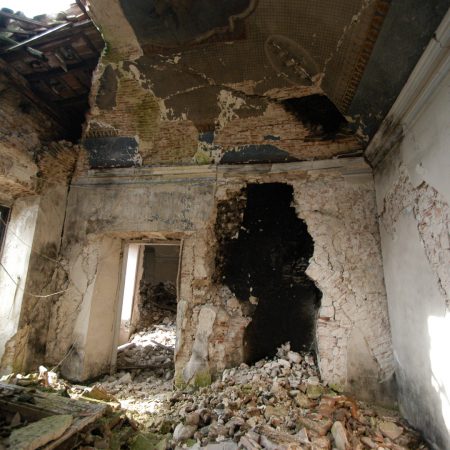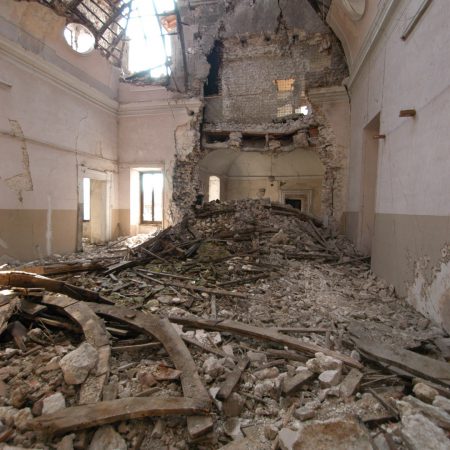It is just a few steps from the Fontana Luminosa and Corso Vittorio Emanuele, right in the town centre.
With its structure, which includes parts of medieval origin and interventions carried out in the Sixteenth and Eighteenth centuries, Palazzo Ardinghelli recounts the history of a great city in terms of splendour and culture.
The building was designed between 1732 and 1743 by Roman architect Francesco Fontana, son of the more famous Carlo, and is mainly characterised by the courtyard from which the monumental Borromini-inspired staircase, frescoed by Venetian artist Vincenzo Damini in 1749, originates.
It is precisely the inner courtyard, which crosses the elegant building between Piazza di Santa Maria in Paganica and Via Giuseppe Garibaldi, that will make the museum also a public space, similarly to the urban system of the MAXXI square in Rome, which houses the district and the city.
Palazzo Ardinghelli was severely damaged by the earthquake. It has been the object of a careful and wise intervention of consolidation, seismic improvement and conservative restoration carried out by MiBACT with funding from the Russian government.
The museographic intervention and the adaptation of the spaces, functional to the installation of works from the MAXXI Collection and cultural programmes, has been designed by a team of technical experts from Fondazione MAXXI in agreement with the Italian Ministry.

